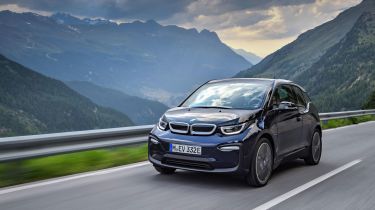BMW i3 (2013-2022) electric motor, performance & top speed
Great handling and nippy acceleration make the BMW i3 one of the best electric cars to drive, although ride comfort is particularly firm in the i3s
| Model | 0-62mph | Top speed | Driven wheels | Power |
|---|---|---|---|---|
| i3 | 7.3s | 93mph | Rear | 168bhp |
| i3s | 6.9s | 99mph | Rear | 181bhp |
The BMW i3 feels nimble around town, while the acceleration is crisp and responsive. Low-slung batteries keep the centre of gravity down, but the weight of the i3 is still enough to dull handling on a twisty road. The ride is a little on the stiff side, too.
BMW i3 electric motor, 0-62mph and acceleration
The standard BMW i3 motor produces 168bhp, with all power available instantly when you prod the accelerator. There’s a single-speed automatic transmission and the car will sprint from 0-62mph in 7.3 seconds with a top speed of 93mph. The 182bhp electric motor in the ‘hotter’ BMW i3s gets it from 0-62mph in 6.9 seconds and on to a 99mph top speed.
Progress is near-silent in both and the motors go into energy regeneration mode when you lift off the accelerator. This slows the car down without use of the brakes, and BMW reckons in normal driving it reduces use of the brake pedal by as much as 70%. Once you’re used to the regenerative braking effect, it’s a very relaxing way to drive.
Handling
The i3 features skinny, low-resistance tyres, which means there’s not a lot of outright grip if you want to drive hard. However, with the motor positioned on the back axle, you do get the typical BMW rear-wheel-drive feel and the i3 is just great fun to drive.
If you fancy an even perkier drive than the standard i3 offers, it’s worth upgrading to the i3s, which not only gets broader tyres, but also features 10mm lower suspension and uprated springs and dampers. It works, up to a point, but the i3's overall weight and tall body mean it’s definitely not a hot hatchback and the firmer ride may be too much for some.



